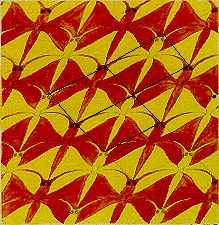
While this may look like a flock of butterflies, it is really groups of interlocking parallelograms that fill the picture. A single butterfly has been translated diagonally over and over again. 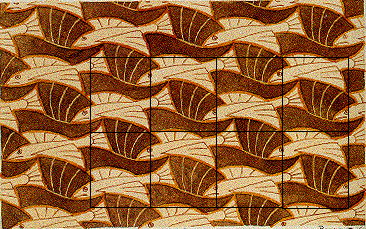
In this picture, there are interlocking rectangles of boats and fish. Here, the image is rotatated horizontally AND vertically, then shifted over. 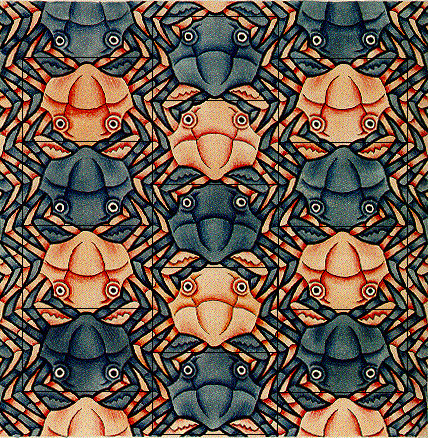
The crabs are shifted forward vertically. Then, the whole line of crabs were rotated 180 degrees and moved over horizontally to form a new line of crabs facing the other way. 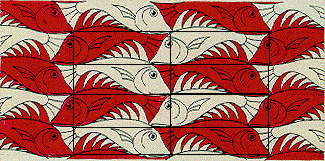 This picture represents one of Escher's more complex configurations. First, the fish is shifted forward horizontally to create an entire row of fish. Then, that row is glide reflected vertically AND in both directions diagonally. |
Page author: Alex Timbers
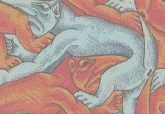 A tessellation is a pattern of a shape with no spaces in
between. Brick walls are a good example of a tesselation; each brick is
the same
shape and they all fit together. If we were to draw a wall, we would
think of a single brick and then shift that forward horizontally, to
create a single, infinitely long row of bricks. Then, we would take that
row and move it up vertically and over horizontally to create
another row, slightly displaced. If this were to go on and on, we
would end up with an infinitely expansive wall of bricks. Escher
creates a "brick wall" out of objects such as devils, horsemen, or fish.
A tessellation is a pattern of a shape with no spaces in
between. Brick walls are a good example of a tesselation; each brick is
the same
shape and they all fit together. If we were to draw a wall, we would
think of a single brick and then shift that forward horizontally, to
create a single, infinitely long row of bricks. Then, we would take that
row and move it up vertically and over horizontally to create
another row, slightly displaced. If this were to go on and on, we
would end up with an infinitely expansive wall of bricks. Escher
creates a "brick wall" out of objects such as devils, horsemen, or fish.